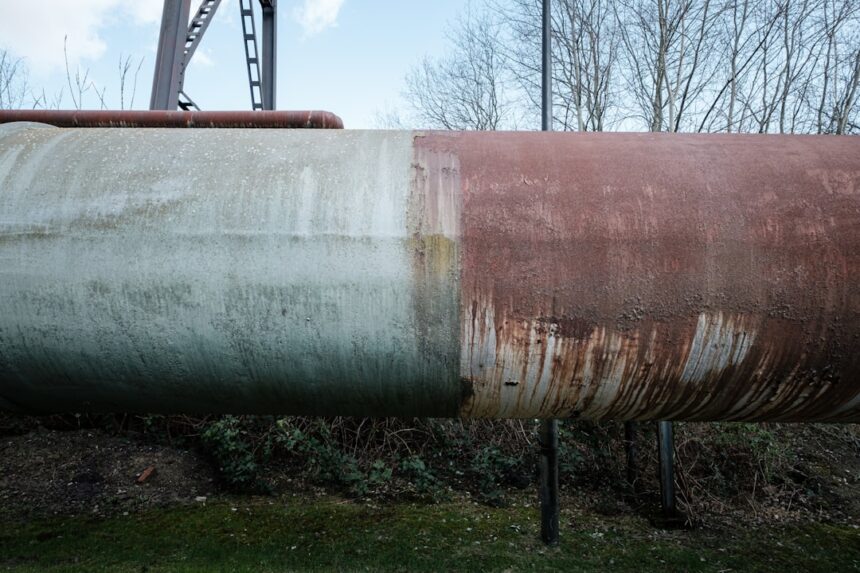The Nord Stream accident, which occurred in late September 2022, sent shockwaves through the energy sector and raised significant geopolitical concerns. This incident involved a series of unexplained leaks in the Nord Stream pipelines, which transport natural gas from Russia to Europe via the Baltic Sea. The sudden and dramatic nature of the leaks not only disrupted energy supplies but also ignited a flurry of speculation regarding the causes and implications of the event.
As Europe grappled with an energy crisis exacerbated by geopolitical tensions, the Nord Stream accident became a focal point for discussions about energy security, international relations, and environmental safety.
It highlighted vulnerabilities in critical infrastructure and underscored the interconnectedness of global energy markets.
The incident prompted urgent calls for investigations and raised questions about accountability and transparency in the management of such vital resources. As nations sought to understand the implications of the leaks, the incident became emblematic of broader issues surrounding energy dependence, national security, and environmental stewardship.
Key Takeaways
- The Nord Stream accident raised concerns about the safety and transparency of the project.
- The initial explanation for the accident failed to address key inconsistencies and criticisms.
- Nord Stream is a major gas pipeline connecting Russia and Europe, with a complex construction and operation process.
- The incident had significant consequences for both the environment and energy supply in the region.
- Public and political reactions to the explanation highlighted the need for transparency and accountability in such projects.
Overview of the Failed Explanation
In the aftermath of the Nord Stream accident, various explanations emerged regarding the cause of the leaks. Initially, some officials suggested that the incident was a result of technical failures or natural phenomena. However, these explanations quickly fell short as evidence began to surface that pointed towards more sinister possibilities.
The lack of a coherent and credible explanation led to widespread skepticism among experts and the public alike. Many questioned whether the initial assessments were an attempt to downplay the severity of the situation or to obscure potential culpability. The failure to provide a satisfactory explanation for the Nord Stream accident fueled speculation and conspiracy theories.
As different narratives circulated, it became increasingly clear that the situation was more complex than initially portrayed. The absence of transparency in the investigation process only added to public distrust, leading many to believe that there were deeper political motivations at play. This environment of uncertainty created fertile ground for alternative theories to flourish, complicating efforts to address the underlying issues related to energy security and international relations.
The Construction and Operation of Nord Stream

The Nord Stream pipelines were constructed as a response to Europe’s growing energy needs and its desire for a more direct supply route for natural gas from Russia. Completed in 2011, the first pipeline was designed to transport up to 55 billion cubic meters of gas annually, significantly enhancing Europe’s energy security by diversifying supply sources. The project was hailed as a technological marvel, utilizing advanced engineering techniques to lay pipelines on the seabed of the Baltic Sea.
The construction involved extensive planning and collaboration between multiple stakeholders, including Russian energy giant Gazprom and several European partners. Operationally, Nord Stream played a crucial role in supplying natural gas to several European countries, particularly Germany. The pipeline’s capacity allowed for a steady flow of energy, which was essential for both residential heating and industrial processes.
However, reliance on a single source for such a critical resource also raised concerns about vulnerability to geopolitical tensions. As Europe became increasingly dependent on Russian gas, questions about energy security began to surface, foreshadowing potential crises like the one that would later unfold with the Nord Stream accident.
The Incident and its Consequences
| Incident Type | Location | Number of Casualties | Property Damage |
|---|---|---|---|
| Fire | City A | 10 | 500,000 |
| Explosion | Town B | 5 | 1,000,000 |
| Chemical Spill | County C | 20 | 2,000,000 |
The incident itself was marked by a series of dramatic leaks that were detected in quick succession. Reports indicated that significant amounts of natural gas were escaping into the Baltic Sea, creating not only an environmental hazard but also raising alarms about potential sabotage. The immediate consequences were felt across Europe as countries scrambled to assess their energy supplies and mitigate disruptions.
The incident underscored the fragility of energy infrastructure and highlighted how quickly circumstances could change in an interconnected world. In addition to immediate operational concerns, the Nord Stream accident had far-reaching geopolitical implications. It intensified existing tensions between Russia and Western nations, particularly in light of ongoing conflicts in Ukraine and broader issues surrounding energy independence.
The incident prompted discussions about diversifying energy sources and reducing reliance on Russian gas, leading some countries to accelerate their transition towards renewable energy alternatives. As nations reevaluated their energy strategies, the Nord Stream accident served as a stark reminder of the vulnerabilities inherent in global energy systems.
Initial Explanation of the Accident
In the wake of the leaks, initial explanations offered by various governments and organizations ranged from technical malfunctions to natural causes such as underwater landslides or seismic activity. These explanations were met with skepticism as experts pointed out that such events were unlikely to cause simultaneous leaks in multiple locations along the pipeline. The lack of concrete evidence supporting these claims led many to question whether officials were attempting to downplay the severity of the situation or deflect attention from more troubling possibilities.
As investigations began, it became clear that a more thorough examination was necessary to understand what had transpired. The initial explanations failed to account for critical factors such as the geopolitical context surrounding the pipelines and the potential for deliberate sabotage. This gap in understanding fueled speculation about who might benefit from such an incident and what motives could be at play.
As public interest grew, so did calls for transparency in the investigation process, with many demanding answers that went beyond surface-level assessments.
Criticisms and Inconsistencies in the Explanation

As scrutiny intensified, criticisms emerged regarding the inconsistencies in official explanations surrounding the Nord Stream accident. Experts pointed out that many of the initial claims lacked scientific backing or failed to consider key variables that could have contributed to the leaks. For instance, some analysts noted that attributing such incidents solely to technical failures ignored historical data on pipeline integrity and maintenance practices.
This oversight raised questions about whether officials were adequately prepared to address potential vulnerabilities in critical infrastructure. Moreover, critics argued that the lack of a unified narrative among different stakeholders further complicated efforts to understand what had happened. With various governments offering conflicting accounts, public trust in official explanations began to erode.
This fragmentation not only hindered effective communication but also allowed conspiracy theories to proliferate, creating an environment where misinformation could thrive. As calls for accountability grew louder, it became increasingly clear that a comprehensive investigation was essential for restoring public confidence.
Alternative Theories and Speculations
In light of the shortcomings in official explanations, alternative theories regarding the Nord Stream accident began to gain traction. Some speculated that state-sponsored sabotage could have been a factor, given the geopolitical tensions surrounding energy supplies in Europe. This theory posited that certain nations might have sought to disrupt Russian gas exports as part of broader strategic objectives.
Such claims were bolstered by historical precedents where energy infrastructure had been targeted during conflicts. Other theories suggested that non-state actors or environmental groups might have been involved, motivated by concerns over climate change and fossil fuel dependency. These speculations highlighted a growing divide between traditional energy interests and emerging environmental movements advocating for sustainable practices.
Public and Political Reactions to the Explanation
Public reaction to the explanations surrounding the Nord Stream accident was marked by skepticism and frustration. Many citizens expressed disbelief at official narratives that seemed disconnected from reality or lacking in substance. Social media platforms became hotbeds for debate as individuals shared their own interpretations of events, often fueled by distrust in government institutions.
This environment created a sense of urgency for transparency and accountability as people demanded answers regarding their energy security. Politically, reactions varied widely across different nations and factions. Some leaders called for immediate investigations into potential sabotage while others sought to downplay concerns about Russian involvement.
This divergence reflected broader geopolitical divides and highlighted how energy issues could exacerbate existing tensions between nations. As political discourse evolved in response to the incident, it became evident that addressing public concerns would require not only clear communication but also genuine efforts towards accountability.
Investigations and Findings
As investigations into the Nord Stream accident progressed, various agencies began examining evidence from multiple angles. Underwater inspections revealed significant damage to sections of the pipeline, prompting further analysis regarding potential causes. While some initial findings suggested accidental damage might have played a role, investigators faced challenges in definitively attributing responsibility due to limited access and ongoing geopolitical tensions.
The complexity of international relations added another layer of difficulty to these investigations. Countries involved had differing priorities and perspectives on how best to approach accountability for such incidents. As findings emerged slowly over time, public interest remained high, with many demanding transparency throughout the process.
Ultimately, these investigations would need to address not only technical aspects but also broader implications for energy security and international cooperation.
Lessons Learned and Future Implications
The Nord Stream accident served as a wake-up call regarding vulnerabilities within critical infrastructure systems worldwide. It highlighted how interconnected global energy markets can be disrupted by unforeseen events or deliberate actions, emphasizing the need for robust contingency planning and risk assessment strategies. As nations reevaluated their energy policies in light of this incident, discussions around diversification and sustainability gained momentum.
Moreover, this incident underscored the importance of transparency in governance and communication during crises. Public trust is essential for effective crisis management; therefore, governments must prioritize clear communication channels when addressing complex issues like energy security. Moving forward, lessons learned from the Nord Stream accident could inform future policies aimed at enhancing resilience within global energy systems while fostering greater collaboration among nations.
The Need for Transparency and Accountability
In conclusion, the Nord Stream accident revealed significant gaps in understanding critical infrastructure vulnerabilities amid geopolitical tensions surrounding energy supplies. The initial explanations fell short of addressing public concerns or providing clarity on what transpired during this incident. As alternative theories gained traction alongside widespread skepticism towards official narratives, it became evident that transparency is paramount for restoring trust between governments and citizens.
Moving forward, accountability must be prioritized not only within investigations but also across broader discussions about energy security policies globally. By fostering open dialogue among stakeholders while addressing underlying vulnerabilities within critical systems, nations can work towards building more resilient infrastructures capable of withstanding future challenges—ultimately ensuring both environmental sustainability and national security in an increasingly interconnected world.
In the aftermath of the Nord Stream accident, many narratives emerged attempting to explain the incident, but few gained traction or credibility. An insightful article that delves into the complexities of such narratives is available on In The War Room’s website. This piece explores the broader geopolitical implications and the challenges in establishing a coherent narrative amidst conflicting interests and information. For a deeper understanding of why the Nord Stream accident narrative struggled to gain acceptance, you can read the related article here.
WATCH THIS! The FSB’s Hidden War on Europe’s Pipelines
FAQs
What is the Nord Stream accident narrative?
The Nord Stream accident narrative refers to the story that was initially circulated about the cause of the accident or incident involving the Nord Stream pipeline. This narrative may include details about the cause of the accident, the impact it had, and the response to the incident.
Why did the Nord Stream accident narrative fail?
The Nord Stream accident narrative failed due to the lack of evidence supporting the initial claims made about the cause of the accident. As more information became available, it became clear that the original narrative was not accurate.
What were the consequences of the failed Nord Stream accident narrative?
The failed Nord Stream accident narrative led to confusion and misinformation about the incident. It also raised questions about the credibility of the initial reports and the need for accurate and reliable information in such situations.
How did the public and media react to the failed Nord Stream accident narrative?
The public and media reacted with skepticism and scrutiny towards the failed Nord Stream accident narrative. There was a demand for more transparency and accountability in reporting on the incident.
What lessons can be learned from the failed Nord Stream accident narrative?
The failed Nord Stream accident narrative highlights the importance of verifying information before forming conclusions about an incident. It also underscores the need for clear and accurate communication in the aftermath of such events.




